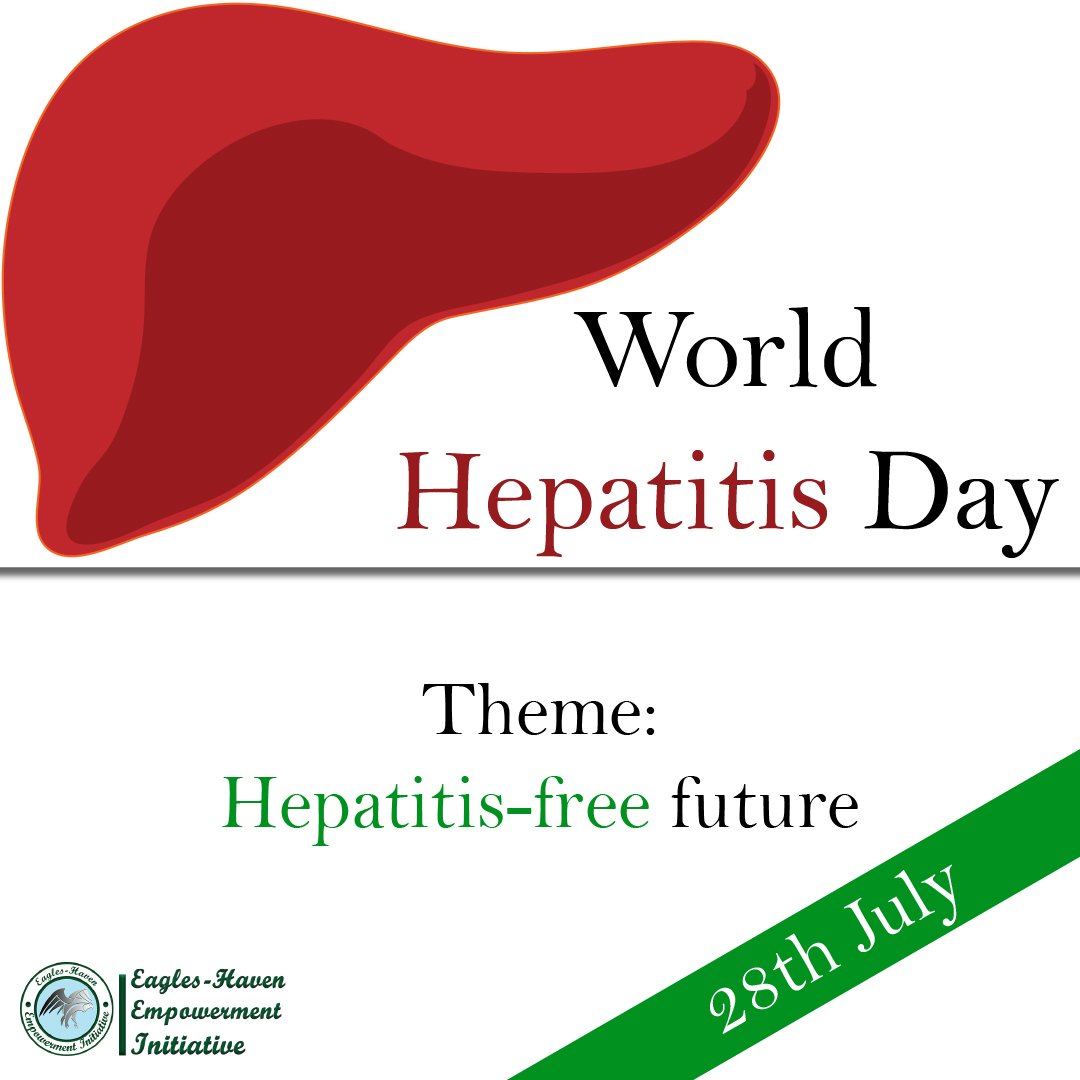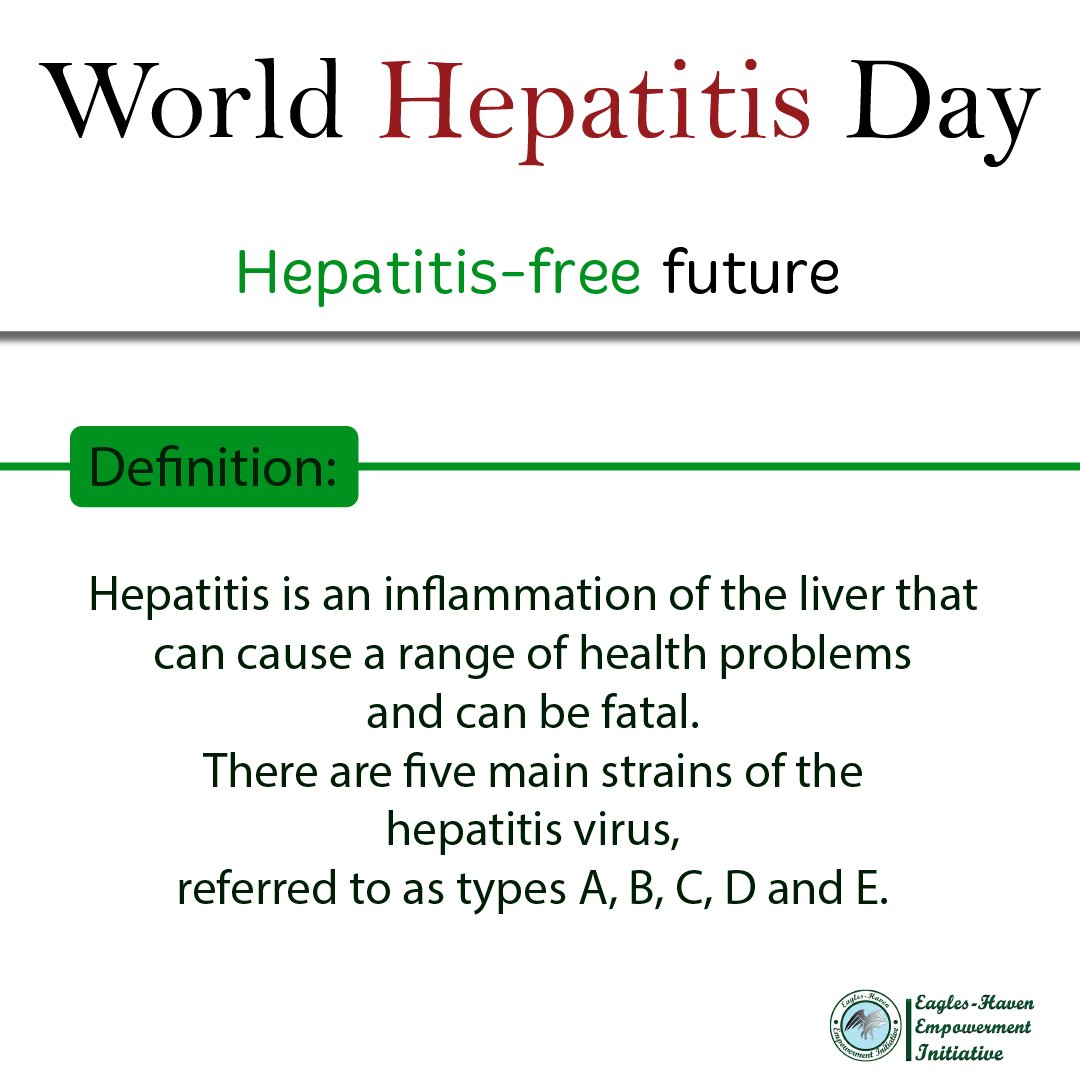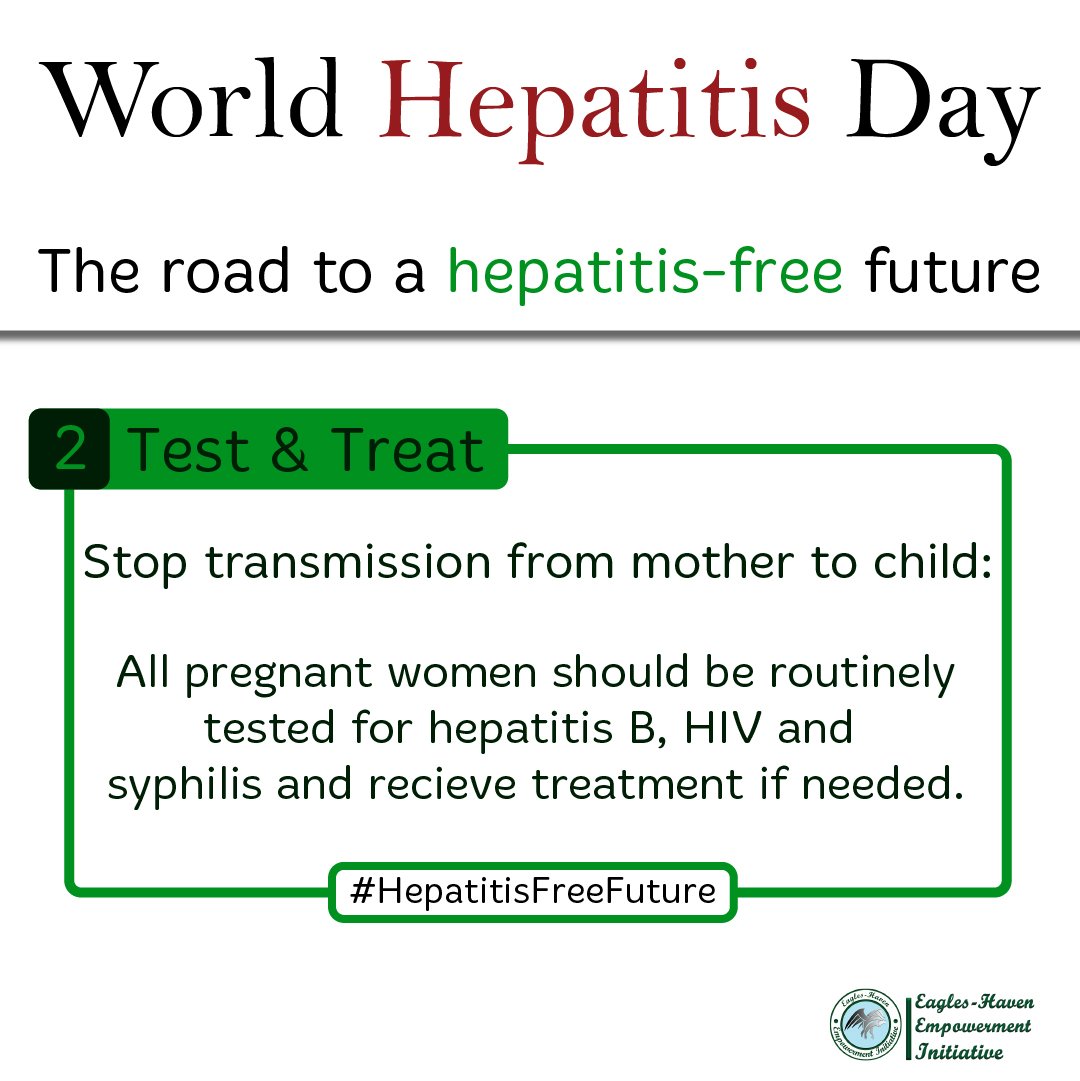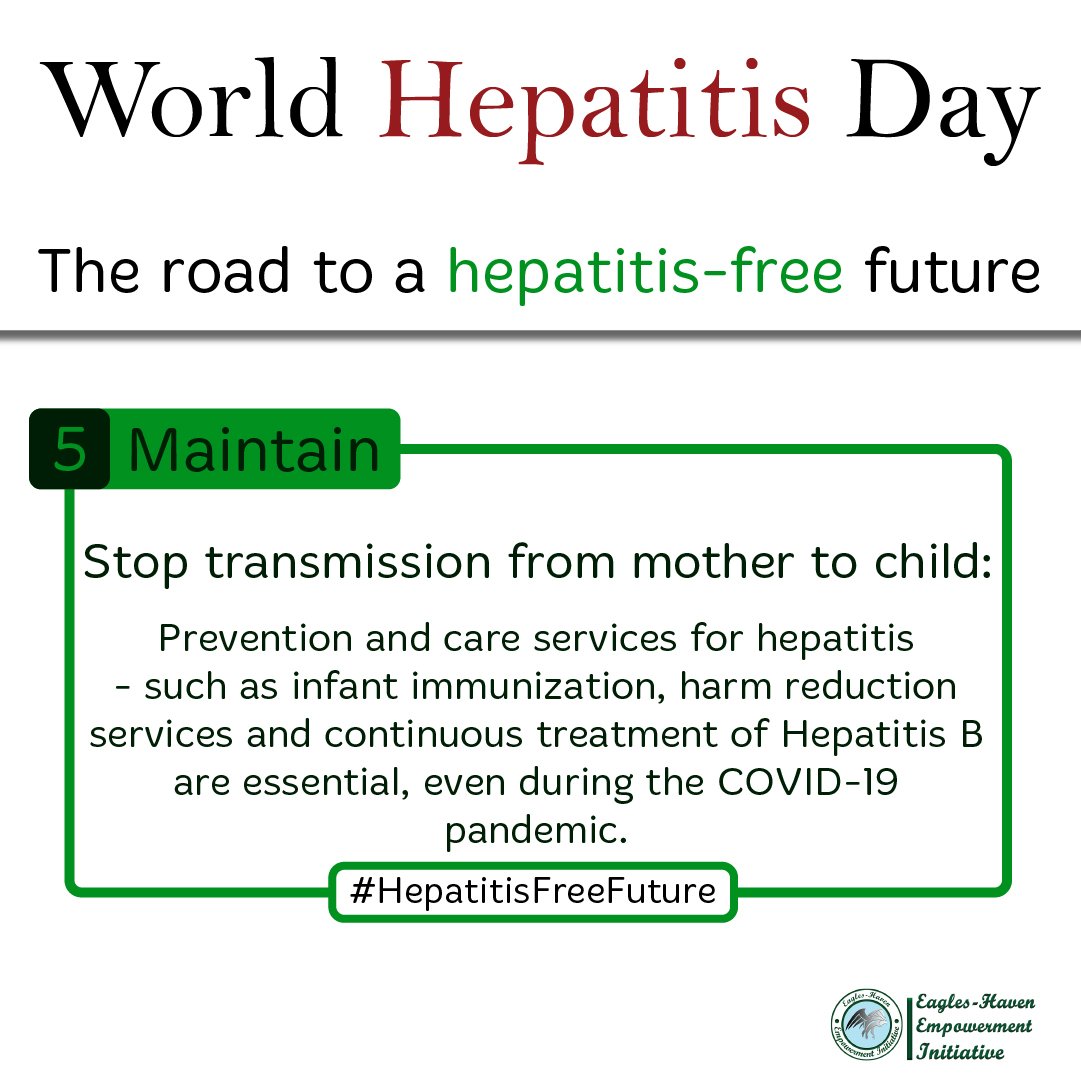World Hepatitis Day
World Hepatitis Day is commemorated each year on 28 July to enhance awareness of viral hepatitis.
Hepatitis is an inflammation of the liver that can cause a range of health problems and can be fatal.
There are five main strains of the hepatitis virus, referred to as types A, B, C, D and E. While they all cause liver disease, they differ in important ways including modes of transmission, severity of the illness, geographical distribution and prevention methods. In particular, types B and C lead to chronic disease in hundreds of millions of people and, together, are the most common cause of liver cirrhosis, cancer and viral hepatitis-related deaths.
Amid the COVID-19 pandemic, viral hepatitis continues to claim thousands of lives every day.
This year’s theme is “Hepatitis-free future", with a strong focus on preventing hepatitis B among mothers and newborns.
The road to a Hepatitis-free future
1. Prevent: Prevebt infection among infants.
All new borns should be vaccinated against hepatitis B at birth, followed by at keast 2 additional doses.
2. Test & treat: Stop transmission from mother to child.
All pregnant women should be routinely tested for Hepatitis, HIV and syphilis and receive treatment is needed.
3. Include: Leave no one behind.
Everyone should have access to hepatitis prevention , testing and treatment services- including people who inject drugs, people in prisons, migrants, and the most affected populations.
4. Expand: Expand access to testing and treatment.
Timely testing and treatment of viral hepatitis can prevent liver cancer and other severe liver diseases.
5. Maintain: Stop transmission from mother-to-child.
Prevention and care services for hepatitis- such as infant immunization, harm reduction services and continuous treatment of hepatitis B are essential, even during the COVID-19 pandemic.
The 5 kinds of Viral Hepatitis:
Hepatitis A
•Hepatitis A is a viral liver disease that can cause mild to severe illness.
•The hepatitis A virus (HAV) is transmitted through ingestion of contaminated food and water or through direct contact with an infectious person.
•Almost everyone recovers fully from hepatitis A with a lifelong immunity. However, a very small proportion of people infected with hepatitis A could die from fulminant hepatitis.
•The risk of hepatitis A infection is associated with a lack of safe water, and poor sanitation and hygiene (such as dirty hands).
•A safe and effective vaccine is available to prevent hepatitis A.
Hepatitis B
•Hepatitis B is a viral infection that attacks the liver and can cause both acute and chronic disease.
•The virus (HBV) is most commonly transmitted from mother to child during birth and delivery, as well as through contact with blood or other body fluids.
•It can cause chronic infection and puts people at high risk of death from cirrhosis and liver cancer.
•There is NO specific treatment for acute hepatitis B. Therefore, care is aimed at maintaining comfort and adequate nutritional balance, including replacement of fluids lost from vomiting and diarrhoea.
•Hepatitis B can be prevented by vaccines that are safe, available and effective.
Hepatitis C
•Hepatitis C is a liver disease caused by the hepatitis C virus (HCV): the virus can cause both acute and chronic hepatitis, ranging in severity from a mild illness lasting a few weeks to a serious, lifelong illness.
•Hepatitis C is a major cause of liver cancer.
•The hepatitis C virus is a bloodborne virus: the most common modes of infection are through exposure to small quantities of blood. This may happen through injection drug use, unsafe injection practices, unsafe health care, transfusion of unscreened blood and blood products, and sexual practices that lead to exposure to blood.
•A significant number of those who are chronically infected will develop cirrhosis or liver cancer.
• Antiviral medicines can cure more than 95% of persons with hepatitis C infection, thereby reducing the risk of death from cirrhosis and liver cancer, but access to diagnosis and treatment is low.
•There is currently NO effective vaccine against hepatitis C; however, research in this area is ongoing.
Hepatitis D
•Hepatitis D virus (HDV) is a virus that requires hepatitis B virus (HBV) for its replication. HDV infection occurs only simultaneously or as super-infection with HBV.
•The virus is most commonly transmitted from mother to child during birth and delivery, as well as through contact with blood or other body fluids.
•Vertical transmission from mother to child is rare.
•HDV affects globally nearly 5% of people who have a chronic infection with hepatitis B virus (HBV).
•Populations that are more likely to have HBV and HDV co-infection include people who inject drugs, indigenous populations and recipients of hemodialysis.
•Hepatitis D infection can be prevented by hepatitis B immunization.
Hepatitis E
•Hepatitis E is a liver disease caused by infection with a virus known as hepatitis E virus (HEV).
•The virus is transmitted via the fecal-oral route, principally via contaminated water.
•Hepatitis E is found worldwide, but the disease is most common in East and South Asia.
•A vaccine to prevent hepatitis E virus infection has been developed and is licensed in China, but is not yet available elsewhere.
Other kinds of hepatitis include:
1. Autoimmune hepatitis
2. Alcohol-induced hepatitis
3. Infection-induced hepatitis
4. Hepatitis caused by certain drugs, toxins, etc.
A hepatitis-free future is achievable with a united effort.








